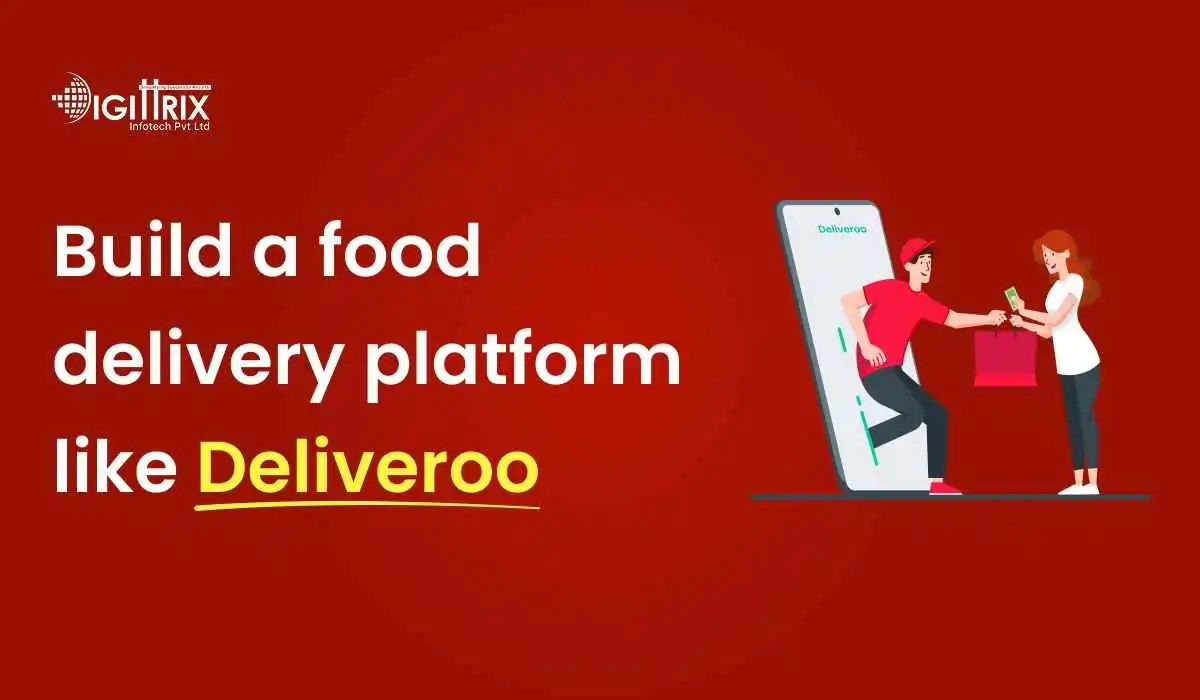The food delivery market has rapidly expanded, fueled by increased smartphone penetration and consumer preference for convenience. Digital ordering and automation continue to drive significant market growth.
Highlights
- Market Growth: The global food delivery market has grown by 20% in recent years, driven by digital adoption and changing consumer habits. (Source: Statista)
- User Base Expansion: Online food delivery users increased by 15% annually, with urban areas leading in adoption. (Source: IBISWorld)
- Technology Adoption: AI-powered recommendations and automated logistics improved efficiency by 30%, enhancing user experience. (Source: McKinsey)
- Revenue Generation: Commission-based models and premium subscriptions contributed to 40% of total revenue for food delivery platforms. (Source: Business Insider)
Co-Founder
Harsh Abrol 
4 min read
With Over 14 years of Experience in the IT Field, Helping Companies Optimise there Products for more Conversions

Food delivery services have changed the way people order and enjoy meals. Apps like Deliveroo and Delivereasy have gained popularity by offering a simple and convenient way to get food from restaurants to customers. If you are considering starting a similar platform, this guide will help you understand the development process and cost involved in the development of food delivery apps. Investing in an on-demand app can help businesses expand their reach and increase customer satisfaction.
A food delivery platform connects restaurants, delivery partners, and customers. It requires a user-friendly interface, secure payment methods, and efficient logistics to ensure smooth operations. The platform should have separate apps or dashboards for customers, restaurant partners, and delivery personnel. Collaborating with an app development company can simplify the process and ensure high-quality results.
Looking for the next big startup idea? Check Digittrix’s expert insights and turn your vision into reality!
Key Features of a Food Delivery App
To build an efficient food delivery service, you need to include the following features:
Customer App Features
- User Registration & Login – Users should be able to sign up using an email or phone number. Integration with social media accounts can make registration faster and easier.
- Restaurant Listings – Display available restaurants with menu details. An interactive UI enhances the food delivery app development experience.
- Search & Filters – Allow users to search for food items or restaurants. Filters for price, cuisine, and rating improve usability.
- Real-Time Order Tracking – Users should see the order progress in real time. GPS tracking helps customers stay updated about delivery status.
- Multiple Payment Options – Support for credit/debit cards, digital wallets, and cash on delivery. Secure payment gateways are essential for trust.
- Order History & Reordering – Save past orders for easy reordering. Customers should be able to mark favourite restaurants and meals.
- Reviews & Ratings – Customers should be able to rate food and service. Feedback helps improve service quality.
- Push Notifications – Alerts for order status, offers, and new restaurant listings. Timely notifications improve customer engagement in an on-demand app.
Restaurant Partner App Features
- Restaurant Dashboard – Manage menu, prices, and available food items. An easy-to-use dashboard enhances efficiency.
- Order Management – Accept and process orders. Restaurants should receive real-time order updates.
- Earnings & Reports – Track daily, weekly, and monthly earnings. Reports help restaurants analyze sales and trends.
- Promotions & Offers – Add discounts and promotions to attract more customers. A good marketing strategy enhances the success of a mobile app development project.
Delivery Partner App Features
- Sign-Up & Verification – Riders should complete a registration and verification process. Background checks ensure reliability.
- Order Assignment – Orders should be assigned based on availability and location. Automated dispatch systems increase efficiency.
- Navigation & Route Optimization – Integrated maps to find the best delivery routes. Faster deliveries improve customer satisfaction.
- Earnings Dashboard – Track completed deliveries and earnings. Riders should have access to payment breakdowns.
- Notifications & Alerts – Alerts for new orders and payment confirmations. Timely updates keep drivers informed.
Admin Panel Features
- User & Restaurant Management – Add, remove, or modify users and restaurants. Admins should have full control over the platform.
- Order Monitoring – Track ongoing and past orders. Ensuring smooth operations is essential for an on-demand app.
- Analytics & Reports – View detailed reports on revenue and app usage. Insights help improve decision-making.
- Commission Settings – Manage platform earnings from restaurant and delivery fees. Flexible commission models attract more partners.
Steps to Build a Food Delivery App
Market Research & Planning
Before starting development, analyze competitors, understand customer preferences, and identify gaps in the market. Choose a business model that suits your goals, such as commission-based earnings or restaurant subscription plans. Studying successful food delivery app development strategies will give you a competitive advantage.
Choose the Right Technology Stack
The right technology will help your platform run smoothly. Below are some recommended technologies:
- Front-End Development: React Native or Flutter for cross-platform mobile apps. This ensures a smooth user experience.
- Back-End Development: Node.js or Python with Django for efficient server-side operations. Performance optimization is crucial.
- Database: PostgreSQL or MongoDB for storing user and order data. A scalable database ensures long-term success.
- Payment Integration: Stripe, Razorpay, or PayPal for secure transactions. Choosing the right payment gateway enhances user trust.
- Cloud Hosting: For reliable hosting, use AWS or Google Cloud. Hosting solutions should be scalable for an on-demand app.
Hire a Development Team
You need a skilled team to build the platform. The team typically includes:
- UI/UX Designers – To create a user-friendly design. A well-designed mobile app development project attracts more users.
- Front-End Developers – To build the customer and restaurant interfaces. Developers should prioritize ease of navigation.
- Back-End Developers – To handle data processing and order management. A reliable system ensures smooth transactions.
- Android & iOS Developers – To develop apps for both platforms. You can hire an Android App Developer or hire iOS App Developer to focus on specific needs.
- Quality Assurance Engineers – To test and fix bugs before launch. Testing prevents technical issues and improves performance.
Boost your on-demand business with automation! Check Digittrix’s expert insights to streamline operations today!
The cost of food delivery app development depends on features, technology, and the app development company location.
- A basic app costs between USD 2,000 - USD 5,000 (INR 1,50,000 - INR 3,00,000), offering a simple UI, basic payment integration, manual order assignment, and limited restaurant listings. This is ideal for startups with a small budget.
- A medium-sized app ranges from USD 5,000 - USD 10,000 (INR 3,00,000 - INR 5,00,000)., including multiple payment options, automated order dispatch, real-time tracking, push notifications, and restaurant and delivery partner dashboards. This suits businesses aiming for regional expansion.
- A large-scale app costs USD 10,000 or more (INR 5,00,000 or more), and features AI-powered recommendations, dynamic pricing, fraud detection, and 24/7 customer support. Companies targeting a global market often hire Android app developers and iOS app developers to build scalable solutions.
The final cost also depends on customization, third-party integrations, and maintenance, essential for a successful on-demand app.
To make a food delivery platform profitable, consider these revenue models:
- Commission-Based Model – Charge restaurants a percentage of each order.
- Delivery Charges – Earn from each delivery.
- Subscription Plans – Offer premium services for restaurants and customers.
- Advertisements & Promotions – Allow restaurants to pay for featured listings.
Final Words
Building a food delivery platform like Deliveroo or Delivereasy requires a well-planned strategy and the right development team. Whether you work with an app development company or hire separate experts, the cost will vary depending on features and scale. By focusing on user-friendly design, efficient logistics, and secure payment methods, you can create a successful food delivery app development business that stands out in the market.
A food delivery platform like Deliveroo or Delivereasy is essential for managing restaurant partnerships, handling order logistics, and providing a smooth customer experience. The platform should include an intuitive interface, real-time order tracking, secure payment options, and a well-structured ordering system. The app should also be easy to use, with interactive features and integrated customer feedback.
If you're planning to develop a food delivery platform like Deliveroo or Delivereasy, contact Digittrix. We are a top mobile app development company with over 14 years of experience and a dedicated team of skilled developers to turn your vision into reality.
Looking to build a custom platform but unsure where to start? Schedule a consultation today with our expert technical managers by calling +91 8727000867.
You can also reach out to us with your queries at digittrix@gmail.com. Let us assist you in developing a complete food delivery solution!







